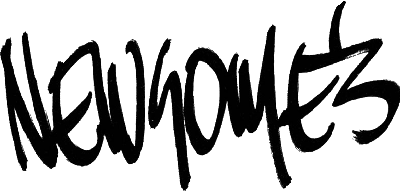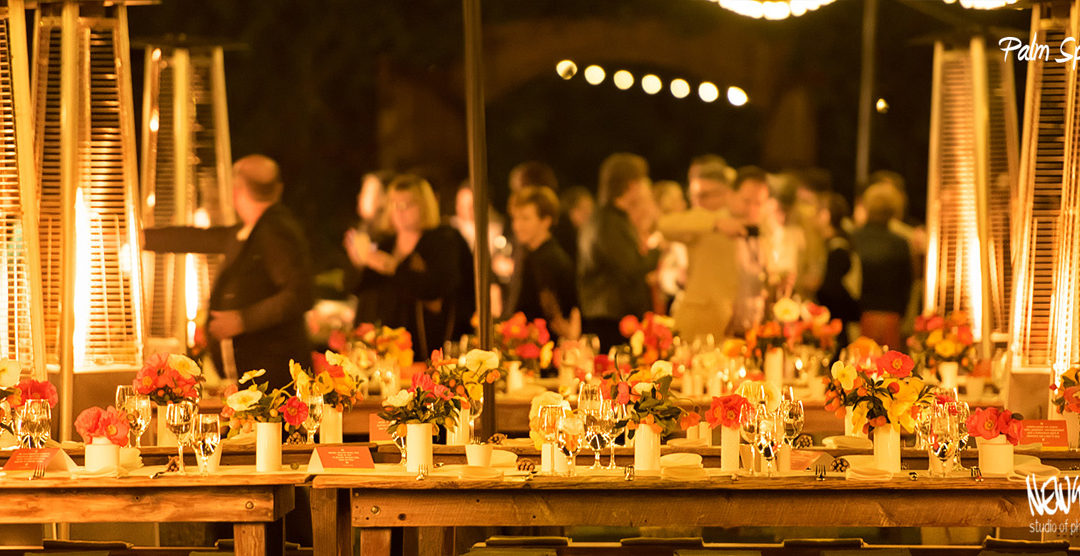Have Camera | Will Travel
Event Photography became a huge part of my business about ten years ago. I had already logged over 800 weddings, so I already knew a thing or two about working an event where unplanned obstacles are commonplace. A wedding photographer has to be flexible and think on the fly to resolve issues you have no control over. I always enjoyed the excitement of photographing weddings, I simply grew tired of the post-production that dramatically increased after the digital revolution. It was that post-production that led my desire to quit the wedding business.
Event Photography as I know it today, is a corporate entity – rarely a private one. Award banquets, Conventions, Seminars, Company Events; I often describe them as “like a wedding reception, but without the drama.” The tension level at a corporate event is evenly distributed to several people involved in the planning of the event, and not concentrated on one or two people (like the bride and groom, or their parents), meaning fewer decisions are being made on emotion, and things tend to be considerably more relaxed.
I found that there are five key elements to successfully providing my corporate clients with exactly what they’re looking for in event photography coverage. Four of the components deal with the photography itself, the fifth deals with the customer service side.
Event Photography Coverage
1. The Players
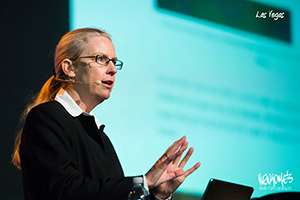 These are the people in the spotlight. The presenters of the awards; the speakers at the podium; the CEO giving the speech; whomever is on stage; they must be lit from the back of the room and they deserve plenty of close up shots – 20% from the front, 70% in profile (left AND right), and 10% from behind to show the audience (if possible). If there’s a working spotlight controlled from the back of the room – great. Use it, and go all-available as much as possible. I’m not afraid of high ISO settings in low light situations because I know how to reduce the noise in post-production rather quickly. If there’s no spotlight, or if it isn’t doing its job well enough, I’ll put a flash on a stand in the very back of the room and aim it directly at the speaker/stage. I will not use any flash on my camera at all. This will give the appearance of a quality spotlight, yet not draw attention to me when working close to the stage – no one realizes it’s me that is firing the flash (if they notice it at all).
These are the people in the spotlight. The presenters of the awards; the speakers at the podium; the CEO giving the speech; whomever is on stage; they must be lit from the back of the room and they deserve plenty of close up shots – 20% from the front, 70% in profile (left AND right), and 10% from behind to show the audience (if possible). If there’s a working spotlight controlled from the back of the room – great. Use it, and go all-available as much as possible. I’m not afraid of high ISO settings in low light situations because I know how to reduce the noise in post-production rather quickly. If there’s no spotlight, or if it isn’t doing its job well enough, I’ll put a flash on a stand in the very back of the room and aim it directly at the speaker/stage. I will not use any flash on my camera at all. This will give the appearance of a quality spotlight, yet not draw attention to me when working close to the stage – no one realizes it’s me that is firing the flash (if they notice it at all).
2. The Attendees
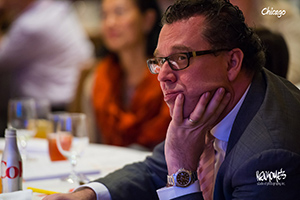 This involves great close up images of people in the audience, intently looking and listening to the speaker. It also includes the parties, activities, and meals that they share together. Images of people in small clusters of two to five people, laughing at a punchline, toasting their drinks, deeply engaged in conversation; these are all incredibly useful images for the client to use in promoting their next event or convention. Some of the events I’m hired to cover require close up shots of the attendees, smiling and looking at the camera. They use these images in small slideshows on their website, but need to include their names and what company they represent. Rather than me ruining the moment and having to ask them for this info after taking the shot, I simply take a second shot of the name badges (close up) which contains all that info. I provide both to the client who now has everything they need to complete their slide show, even if I’m in Los Angeles and the person building the slideshow is in New York.
This involves great close up images of people in the audience, intently looking and listening to the speaker. It also includes the parties, activities, and meals that they share together. Images of people in small clusters of two to five people, laughing at a punchline, toasting their drinks, deeply engaged in conversation; these are all incredibly useful images for the client to use in promoting their next event or convention. Some of the events I’m hired to cover require close up shots of the attendees, smiling and looking at the camera. They use these images in small slideshows on their website, but need to include their names and what company they represent. Rather than me ruining the moment and having to ask them for this info after taking the shot, I simply take a second shot of the name badges (close up) which contains all that info. I provide both to the client who now has everything they need to complete their slide show, even if I’m in Los Angeles and the person building the slideshow is in New York.
3. The Environment
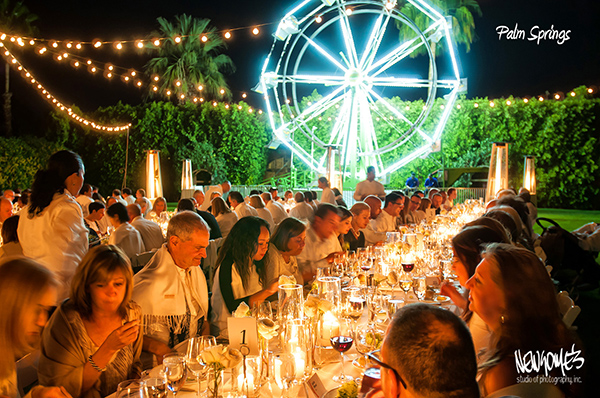 Environmental images will always include pull-back room shots from a high angle to include as much of the meeting space and attendees as possible. These are very useful for the banners on the event’s Facebook page or web site. It also includes pull-backs of any outdoor activities, meals provided (poolside, in restaurants, etc), or tour spots the attendees may visit. I keep my tripod and remote trigger handy because I want to avoid the use of a flash in many of these instances so it won’t destroy the warm ambiance the event planner has created.
Environmental images will always include pull-back room shots from a high angle to include as much of the meeting space and attendees as possible. These are very useful for the banners on the event’s Facebook page or web site. It also includes pull-backs of any outdoor activities, meals provided (poolside, in restaurants, etc), or tour spots the attendees may visit. I keep my tripod and remote trigger handy because I want to avoid the use of a flash in many of these instances so it won’t destroy the warm ambiance the event planner has created.
4. The Details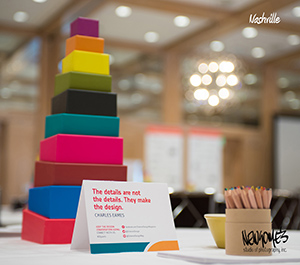
Event planners put an awful lot of time, money, and energy into planning the company event, and the devil is in the details. These are
the little things that add flavor to the event, giving it a theme or style that must be recognized and preserved in the images I deliver. Everything from centerpieces at the tables, logo’d signage, carefully placed name badges or table assignments, to flower arrangements or decorated entryways and stages. A close up image with a shallow depth of field will highlight many of these details beautifully, and my clients really love that look.
5. Customer Service
Once I’ve signed on to do a job, no matter what the rate of pay is, I am “all-in” with whatever my client asks me to do. I don’t care if it’s not part of my job description, not part of my contract, or not at all what anyone might expect to be done by the event photographer, if I see something falling through the cracks and needing to be done, I’m on it. I’m not just a hired gun who is there to take pictures, I’m now part of the team. I’m now company staff. I’m on my CLIENT’S side. I want to make THEM look good, and I’m not above putting in an 18-20 hour day at break-neck speed if need be, to keep pace with them and the event they’ve hired me to be part of. At the end of the event, I want them to look at the images with pride, but also remember that I was more than just a photographer, I was an essential part of the success of their event. It’s that level of customer service that often has them calling me back the following year to provide my style of event photography for them again and again.
For more information on event photography by Newsome’s Studio, please contact Kevin Newsome directly at kevin@newsomesstudio.com or visit the studio at 10012 N. Dale Mabry Hwy, Suite 219, Tampa, FL.
